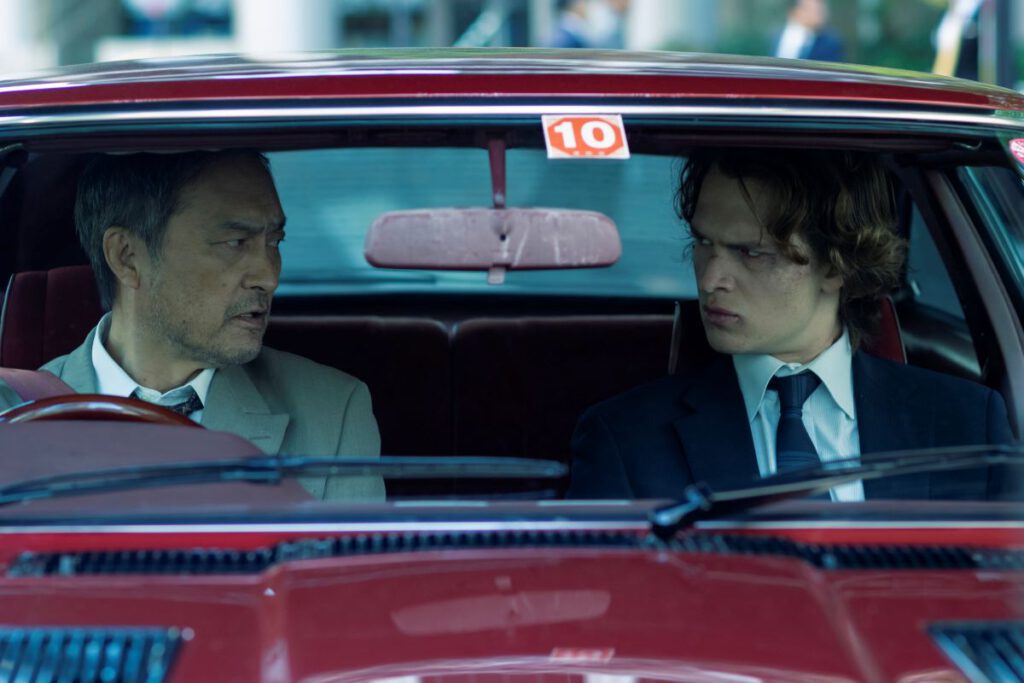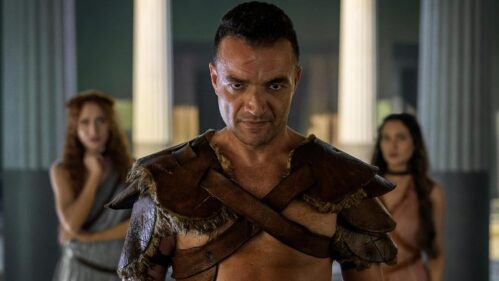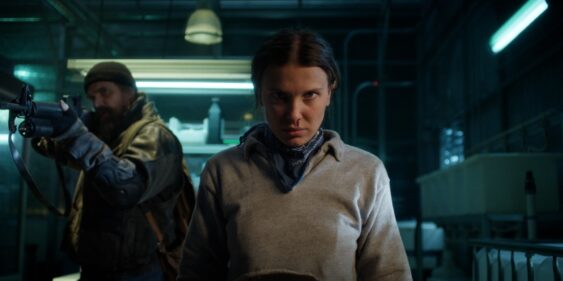When the Michael Mann-directed pilot of “Tokyo Vice” premiered in spring of 2022, viewers were promised a crime thriller set to the backdrop of a neon-soaked Japan. What truly unraveled after the first episode aired was a sprawling–and at times slow–drama about an American writer getting in over his head with the Japanese yakuza. Watching the first season, it felt like the show’s protagonist, Jake (Ansel Elgort), was at odds with the kind of show the creators were attempting to create. He’s seldom intriguing and is played by an actor who sometimes seems to be coasting along. On top of that, everyone around Jake is significantly more interesting than the protagonist. With the final episode of the first season, it appeared that the scope of “Tokyo Vice” would widen, and thankfully, the writers have delivered on that front.
The show’s second season begins immediately where the first left off, with Jake showing his mentor Hiroto (an always enigmatic Ken Watanabe) a video of Onyx club hostess Polina (Ella Rumpf) being murdered by a member of the Tozawa clan. Instantly, we’re pushed back into this world without a moment to breathe, along with its characters. This hasty start aids in the show’s newfound pulse, ultimately working significantly better than the first installment. It feels as if the writers finally figured out that the pacing for a show like this should be almost neck-breaking, so they’ve left the tedious exposition that plagued season one on the cutting room floor.

Another problem that has been rectified is “Tokyo Vice’s” protagonist problem. Jake has, and always will be, unfortunately abysmal as a character and that remains true in this new season. We’re still forced to follow him on menial tasks, and through a baffling romantic plot, but it seems like the writers have realized this character doesn’t hold a candle to any of the people with whom he shares the screen. Elgort still appears as if he is sleeping through most of his scenes, devoid of any charisma that almost all of his scene partners have in abundance. Thankfully, he is not as strong of a focal point as he was last season. While Jake is still undeniably our narrator, his peers are finally given the screentime their talents warrant.

Hiroto was severely underused in season 1, but now he has almost as much screen time as Jake. Side characters like Jake’s boss Emi (Rinko Kikuchi) and even his friend Trendy (Takaki Uda) are given the room to build lives of their own outside of Jake’s point of view. It allows us not only to care about these characters more but lets these actors whose talents had previously been wasted showcase their potential.
One of the most interesting aspects of the series’ first season was Sato (Shô Kasamatsu), a young yakuza member who’s warring morality served as the most interesting hook of the show. In season 2, this is still apparent, but Sato’s presence no longer hinges on Jake or his other white on-screen partner Samantha (Rachel Keller). Here, he is finally allowed to exist as his own entity, which allows Kasamatsu to deliver the best performance in the show. It is nearly impossible to look away when he’s present, his presence dominating the scope of the camera’s lens until he’s the only thing visible on screen. His eyes and body carry a weight to them which mirrors an acting legend like Watanabe’s, a face so incredibly bare that you can’t help but feel like you’re watching something special. It’s almost impossible not to wish that he was the series’ main character, and although he isn’t, his screentime in season 2 has thankfully increased.
While the characters have all been given more care, the main problem with “Tokyo Vice” still stands: the show doesn’t know what it wants to be. It is still clearly pulling from an array of influences which aren’t as glaring as the first season, but because it positioned itself there in its first installment, season 2 feels like it’s hanging in limbo. The show is still enthralling, but I still don’t know what exactly it’s trying to say. Instead, it feels like we’ll never truly understand “Tokyo Vice,” or its position in the zeitgeist that is modern television. There are scenes sprinkled throughout in this season that especially make it feel like you’re watching something special, but really, how different is this series from other shows of its caliber?
For a show that’s meant to entrap and transport you on a journey into a criminal underworld, the series and the world it’s trying to investigate are at odds with one another. If given the chance, this could shape up to be a truly great underrated gem, but with the current state of streaming and television, the hope for more seasons after this one isn’t high. There’s a cliffhanger in episode five (the last of the screeners shown to critics) that feels like a turning point for the series in the best way possible. But why did it takeso long for the show to get here? This instance is preceded by an intense showdown that the series would have benefited from five episodes prior, and if given the chance to truly find its legs, hopefully sequences like this continue. What this scene showcases is a problem that “Tokyo Vice” continues to suffer from. It constantly feels like it’s on the cusp of greatness, yet something is still holding it back.
Five episodes screened for review. Season two premieres on HBO February 8.












